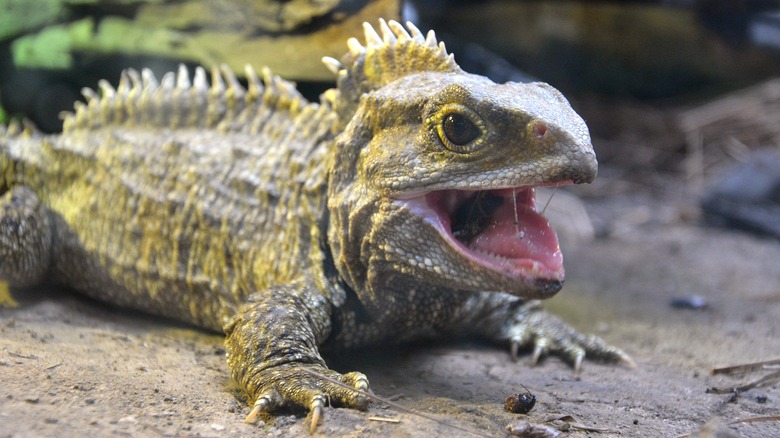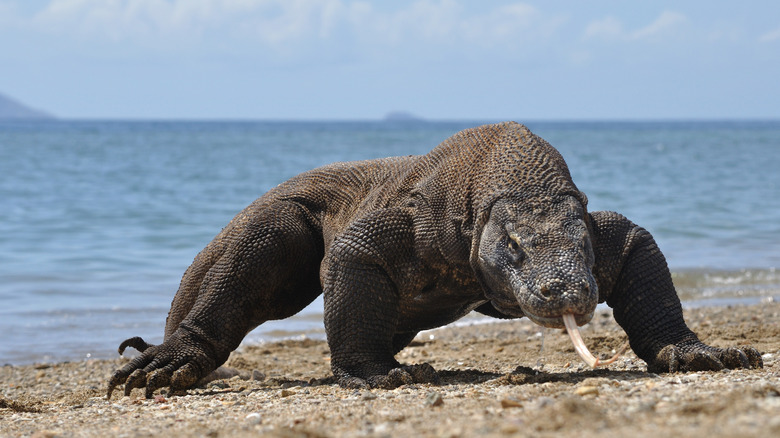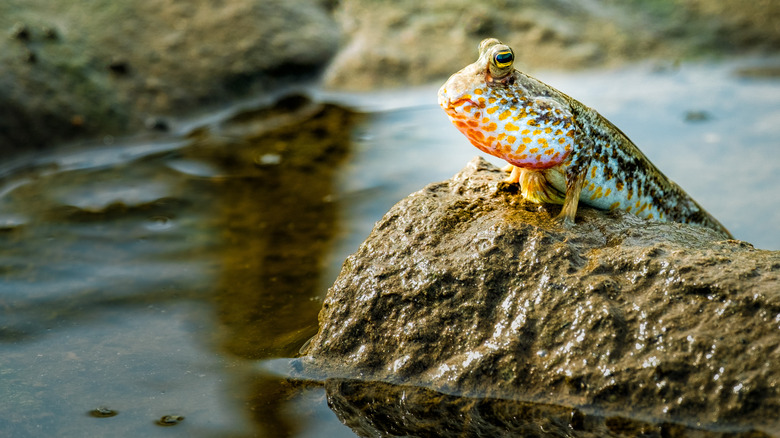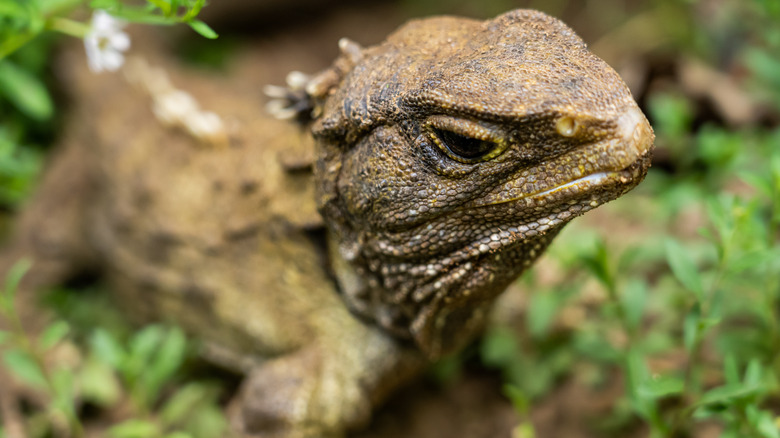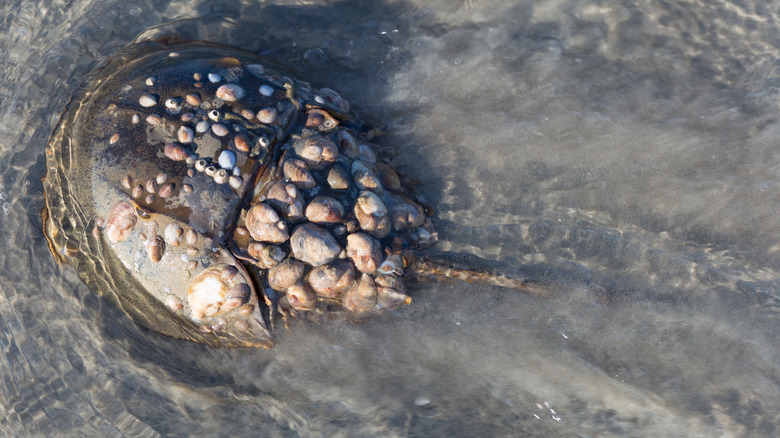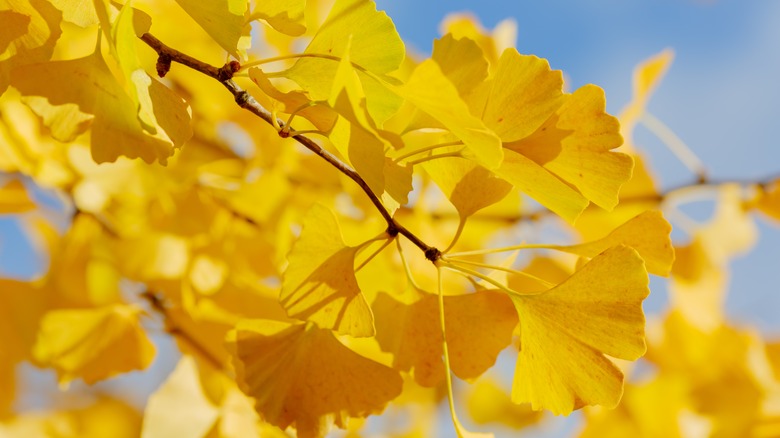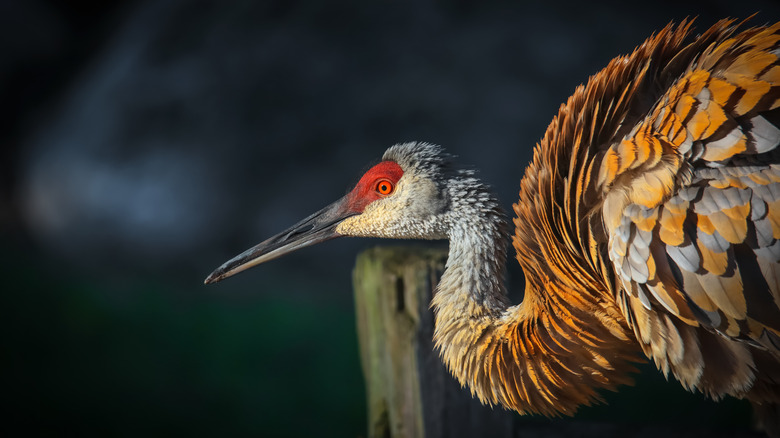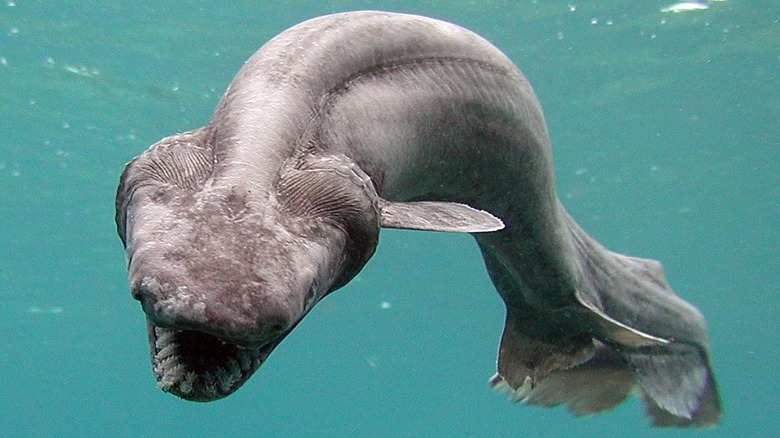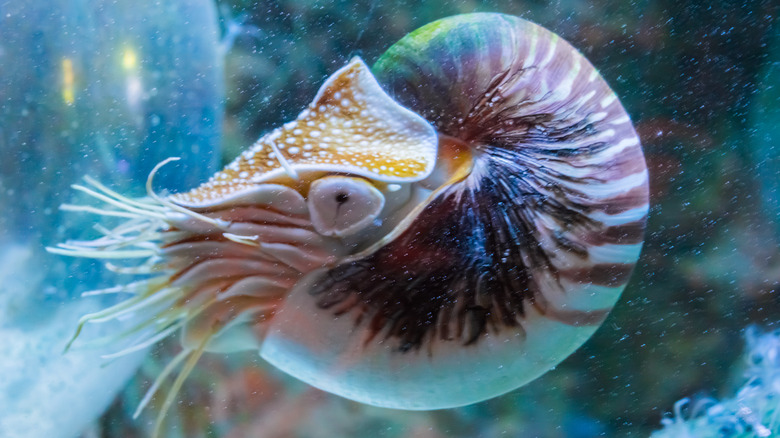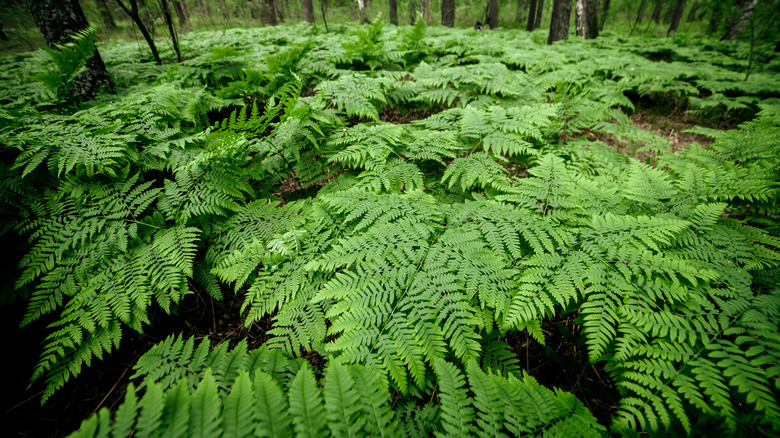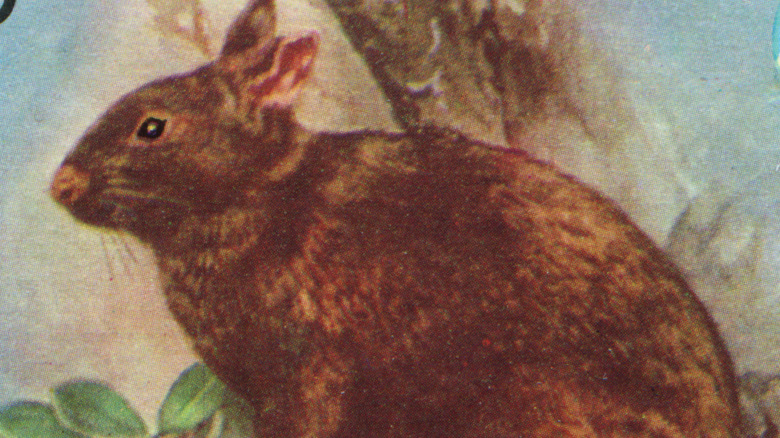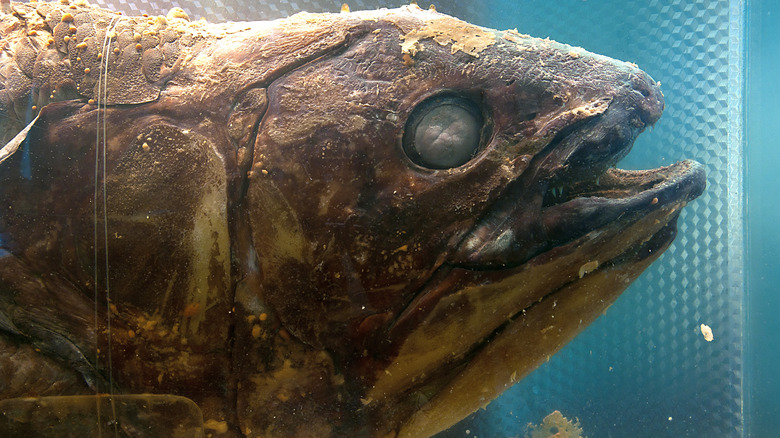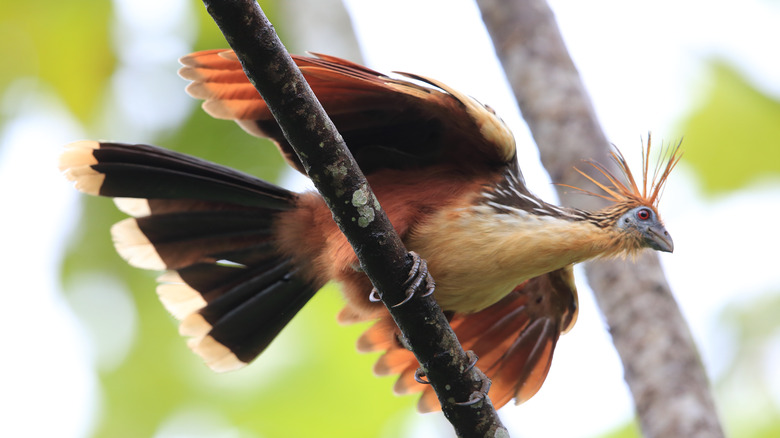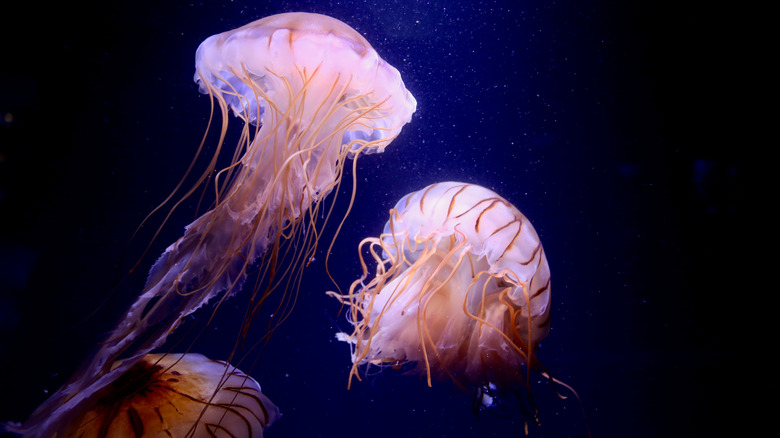The Most Fascinating Living Fossils You Can Find In The World
The term "living fossil" is a little controversial, so let's clear some things up before we start talking about these incredibly cool plants and animals.The University of Bristol says (via Science Daily) that the term was coined by Charles Darwin way back in 1859 — and this is the definition we're going to be going back to. He wrote that some species were living fossils, and meant that they looked very much like they had millions of years ago. He believed that evolution had just sort of skipped over some species, suggesting that most of them existed in an environment that didn't have the sort of competition and extremes that drove evolution in other species. Straightforward, right?
Science likes things to be exact, though, and there's a lot of people who just don't like the idea of living fossils because it's not too precise. Let's take crocodiles. They're often called living fossils, but National Geographic says that they're absolutely not: They've been subjected to "dramatic evolutionary changes" that mean they're not the same creatures that roamed the planet 200 million years ago. They don't walk the same, hunt the same, and some prehistoric crocodiles actually lived full-time in the open ocean. So ... not living fossils.
For the sake of our argument, let's simplify things, and talk about living fossils as creatures that look very, very similar to those that wandered the earth alongside dinosaurs and megafauna.
Komodo dragon
If there's any animal that deserves to be described as a dragon, it's the Komodo dragon. These massive lizards only live on a few islands in eastern Indonesia ... and that's kind of okay. Adults can reach sizes of up to 10 feet long, and they eat mostly big herbivores, although The Guardian says that tourists were on the menu at least until 1974.
The Komodo dragon was first discovered and documented after Dutch colonists were warned of a so-called "land crocodile" back in 1910, and it was only after capturing one that it was more accurately described as a huge monitor lizard ... and some expletives. Probably. Just where the Komodo dragon came from has been hotly debated, and in 2009, research published in PLOS ONE blew all those theories out of the water.
Researchers found the answer not in Indonesia, but Australia. It was there that fossils from Komodo dragons — or Varanus komodoensis — were discovered on mainland Australia, dating back 3.8 million years. Most surprisingly, fossil evidence shows that Komodo dragons reached their massive size around 900,000 years ago, and have remained relatively unchanged since. Even as mega-flora and -fauna flourished and died around them, the Komodo dragon lumbered on.
Mudskipper
Fish can be kind of creepy, and amphibious fish are really, really creepy. They've also been around for a long, long time.
A study in Nature found that some fish went from water to land around 360 million years ago, and it kind of kick-started this new trend of walking instead of swimming. That started a whole slew of evolutionary developments, and according to Two Oceans Aquarium, the mudskippers we know and love today branched off that family tree around 140 million years ago. After that break, Nature Asia says that mudskippers evolved hundreds of genetic adaptations to help them deal with life on land. That included things like changes to their eyesight, and an ability to survive in environments that are low in oxygen and high in ammonia.
That means they were around during the Cretaceous period (which Live Science says started around 145 million years ago). Mudskippers were just about getting notions of living on the land at that time, and about 79 million years later — after they survived the asteroid impact that wiped out a lot of the planet's life — they thrived in the vacuum that was left behind.
Tuatara
At a glance, the tuatara looks like your standard sort of lizard, but according to The New York Times, they're anything but. They have a ton of weird features, from a third eye hiding beneath the scales on their head to a century-long lifespan. The weirdest part of all is that they're the sole surviving member of a family that otherwise went extinct at the end of the Mesozoic Era, around 66 million years ago.
It remained unclear just how tuataras survived, and it was only recently (in the grand scheme of things) that paleontologists discovered how much of an evolutionary throwback that modern lizards are. When researchers from Harvard University's Museum of Comparative Zoology compared the modern tuatara to fossilized remains discovered in 1982 and dated to the early Jurassic period, they were shocked to find that while there were some differences — like the development of teeth fused together like a beak — the modern-day tuatara looked shockingly similar to the one that was crawling around 190 million years ago.
Researchers argued that although yes, slow evolution wasn't the same as no evolution, the tuatara simply didn't need to undergo drastic changes. So, they didn't. But there's bad news for these ancient creatures: According to The Guardian, the planet's increasing temperatures is causing fewer females to hatch. If things keep going in that direction, the tuatara will go extinct.
Horseshoe crabs
Come across a horseshoe crab on the beach, and it'd be completely understandable to expect a T-Rex to come thundering over the horizon next. They look ancient, and they absolutely are. Horseshoe crabs aren't actually crabs — it's more accurate to think of them as a close relative of creatures like scorpions. According to the Natural History Museum, they evolved around 480 million years ago. Wild, right? It's going to get wilder.
While there's a ton of prehistoric remains of the shells of these creatures, soft tissues — like the brains — are less commonly preserved. However, in 2021, researchers were able to recover a unique fossil from Illinois's Mazon Creek. The fossil contained an imprint of the creature's soft tissues, preserved in eerie, exacting detail in the mineral that covered the crab before the tissues decomposed. That alone was pretty surprising, but it didn't hold a candle to the discovery that although the living species of horseshoe crabs aren't 100% the same as they were millions of years ago, the brain and entire nervous system has remained unchanged for a whopping 310 million years.
Horseshoe crabs have been thriving all this time, but it's worth noting that thanks to humankind, they're now on their way to becoming endangered. The Conversation says that the widespread use of crabs in medical testing has necessitated a movement to save them, and although they survived millions of years, they might not survive humans.
Gingko
Walk down almost any city street and it's likely that if there are any trees, there's going to be some gingko trees there. They're popular city trees in spite of their bad smell — they're pretty, so we'll overlook the smell in favor of their pretty, fan-shaped leaves and bright colors — and they're also resistant to pollution, disease, and insects, and their roots will grow under concrete. Sure, they're adapted to modern city life, but strangely, today's Gingko biloba trees are the last remaining species of a family that's been around for millions of years.
According to National Geographic, gingko trees are at least 170 million years old. That estimate comes from the discovery of fossilized leaves in China, and the leaves and seeds are pretty much the same as they are today.
Ginkgo trees were once much more widespread, and covered huge areas of the world. Around 66 million years ago, the planet started cooling off, and ginkgoes found themselves dealing not only with a changing environment, but competition from other trees that had evolved other ways of attracting pollinators and animals to spread their seeds. By 11,000 years ago, the only place gingkoes could still be found was in China, but they held on. Fortunately! It was about 1,000 years ago that people discovered that gingko seeds were edible, and while there are few wild populations left, the tree's popularity in modern cities seems to guarantee it's going to survive for a little longer.
Sandhill and Crowned Cranes
Sandhill cranes (like the one pictured) are found in marshy wetlands throughout North America. They breed in Canada, winter in areas like Texas and Florida, and are known for their trumpeting calls, intricate dances, and devotion to their partners. Fun fact: Although they're capable of breeding at two years old, some wait for years until finding the right partner, and they'll stay with that partner for life.
Cranes have been performing their duets and dances for a long time: According to Cornell University, the oldest Sandhill Crane fossil ever found was around 2.5 million years old. That fossil, says Audubon, was the oldest one positively identified as a Sandhill Crane, and it was discovered in Florida's Macasphalt Shell Pit. Florida is still one of the wintering grounds for the modern-day birds, and there's a little bit more to the story.
Cranes as a group are actually some of the oldest birds in the world, and another crane species — the Crowned Crane — is even older. Fossils determined to belong to a Crowned Crane were discovered in Nebraska's Ashfall Fossil Beds, and were estimated to be around 10 million years old ... give or take.
Frilled shark
There's a lot of really disturbing stuff in the sea, and let's talk about the frilled shark. National Geographic says that these eel-like creatures reach lengths of up to around five feet, have about 300 needle-shaped teeth, a hinged jaw that can handle disturbingly large prey, and — fortunately — live around 2,000 feet beneath the surface of the ocean.
They also say that these deep-sea creatures are pretty much exactly the same as they were 80 million years ago.
Not surprisingly, there's not too much that's known about this elusive creature. Most of the frilled sharks that have been caught are dragged to the surface in the nets of fishermen, and those that survive tend to die shortly afterwards — like the one captured in Australia in 2007. That one made it to a nearby marine park before dying, and the bottom line is that no one even knows just how common they are. They are, however, called (via CBS) one of the most "primitive" sharks in the world, and honestly, they should probably just stay down in the depths where they're the most comfortable.
Nautilus
The shells of the nautilus are often lauded as being a naturally-occurring example of the Golden Ratio, but according to the Queensland Museum Network, that's not actually true. What is true about these oft-fished mollusks is much cooler than just some math.
Fossilized nautiluses — and yes, that is the plural — have been found and dated to as far back as 500 million years. That's all the way back to the Paleozoic era, which LiveScience says is the time when Pangaea fully formed, plants spread across the land, and animals were first starting to develop things like spinal cords. This was also a time when the seas were full of life, and that included these spiral-shelled mollusks that are still around today. Only today, they're not quite as plentiful.
There are a few different species of nautilus, and the Monterey Bay Aquarium says the Chambered Nautilus can live up to 20 years, has around 90 tentacles, and in 2017, was officially listed as threatened. After a rise in the demand for perfect, mother-of-pearl nautilus shells, collectors moved from collecting shells to trapping the creatures, resulting in a decline in the population of this prehistoric animal.
Ferns
Anyone imagining dinosaurs thundering through the forests and making their way through fields of ferns would be absolutely correct, because according to research from the Swedish Museum of Natural History and Lund University, ferns have stayed pretty much the same for at least 180 million years.
Their conclusion — published at PHYS — came after a very, very close examination of a fossilized royal fern that was so well preserved the internal structures of the plant were still intact and visible. A comparison of things like the plant's chromosomes and cell structures revealed that it was pretty much the same plant that's still doing pretty well today — right down to the fern's DNA. They called it a "paramount example of evolutionary stasis," and it's entirely possible they've remained unchanged for even longer than that.
It's unclear just how much evolution — at least, on a cellular level — took place in the early days of ferns, but according to the University of Waterloo, they're some of the oldest plants in the world, and first developed around 360 million years ago. Fossilized imprints of ferns are common, but with the discovery of the 180 million-year-old royal fern DNA, it confirmed just how ancient these surprisingly ordinary plants truly are.
Amami rabbit
A rabbit's a rabbit ... right? Not so fast.
The Amami rabbit, says the University of Michigan, is a particular sort of bunny that only lives on islands off the coast of Japan. These islands — along with their furry residents — broke away from the mainland about 1.5 million years ago, so the rabbits have been left in their own corner of the world. Surprisingly, they've been doing their thing — largely unchanged — for longer than that. It's a little unclear just how long they've been around, but a few hints have been found in the fossil record. According to MongaBay, the Amami rabbit gained their living fossil status when rabbit remains — mostly unchanged from modern-day Amami rabbits — were dated back to the Miocene era. (That, says Berkeley, is the time frame of between 23 million and 5 million years ago.)
The rabbits are considered among the world's most primitive, but as with so many species, there's bad news here, too. Way back in 2008, scientists were already trying to preserve Amami rabbit DNA by cloning embryos and implanting them in other types of rabbits. The population was down to around 5,000 individuals, and when rabbits can't breed fast enough to stay ahead of the extinction curve, that's some dire stuff, indeed.
Coelacanth
There's no way to talk about living fossils without taking a look at the fish that's sort of the poster child for the whole idea. That's the coelacanth, and not only does it perfectly embody what a living fossil should be, it's also the perfect example of why there's such a big problem when it comes to defining them. The Netherlands' One Planet Museum explains that for a long time, science knew about these ancient fish called the Coelacanth. They were about 400 million years old, and when the dinosaurs all went the way of the dodo about 65 million years ago, the Coelacanths went, too. That was the story ... until 1938, when a fisherman caught one off the coast of South Africa.
Since then, different types of Coelacanth have been rediscovered in oceans across the world — and here's where the nitpicking starts. At the same time, many scientists say that yes, these ancient fish look the same as their fossilized ancestors, but researchers at the University of Toronto say (via SciNews) that over the last 10 million years or so, the Coelacanth genome has actually gained 62 new genes, which it picked up from other species.
They still look the same as they did, but on a genetic level, they're different. So, should they still be considered living fossils? For the most part, that's a yes, and in 2021, the BBC reported that researchers had learned the Coelacanth had an incredibly slow "biology and life history," and could live up to and beyond a century. And yes, they called it a living fossil.
Hoatzins
Hoatzins are extraordinarily weird birds, starting with the fact that, according to Discover Wildlife, they chew cud in the same way cows do. That's before the plant tissues passes through their digestive system and gives them their rather pungent aroma, described as being the worst kind of cow poop you can imagine.
It's why they're also called the stink bird, and let's talk about a few more fun facts, courtesy of the University of Michigan. Their native habitat is the forests of the Amazon, and when they hatch, they have functional claws that allow them to climb trees to escape predators. (If that fails, the young birds can hurl themselves into nearby waterways and swim to safety.) They lose the claws when they grow up, but that only makes them marginally less weird.
They've also remained pretty unchanged for the last 34 million years, with the exception of their habitat. According to findings from the Senckenberg Research Institute and Natural History Museum, hoatzin fossils dating back millions of years have been found in Europe (via Science Daily), and in Kenya (via BioOne). Although the bird has gone extinct in both Europe and Africa, they add that the fossil record in Brazil has also yielded some pretty ancient hoatzin fossils dating back 22 to 24 million years, described as having "an essentially modern-type morphology," and displaying some of the weird traits — like a large crop for pre-digesting their food — that today's hoatzin also have.
Jellyfish
Jellyfish might not be the first thing that comes to mind with a mention of the fossil record, and that's legit — it's also why Live Science says paleontologists say they haven't been able to determine just what's going on with these ancient animals.
In 2007, they reported on findings from the University of Kansas that showed just how long jellyfish have been around. Fossilized jellyfish in Utah were dated to 505 million years ago, and the strange find was only made possible because the jellyfish had died in incredibly fine sediment that preserved the impressions of everything from tentacles to the familiar bell-shaped body still seen in jellyfish today.
What they couldn't tell is when jellyfish evolved into the shape that remains largely unchanged even today, and here's the thing: In 2017, Live Science reported on another finding that pushed jellyfish back even earlier. A so-called "jellyfish graveyard" discovered in southern California pushed these sea-dwellers back to about 540 million years. So the next time a school of them ruins an afternoon at the beach? Maybe show a little respect.
